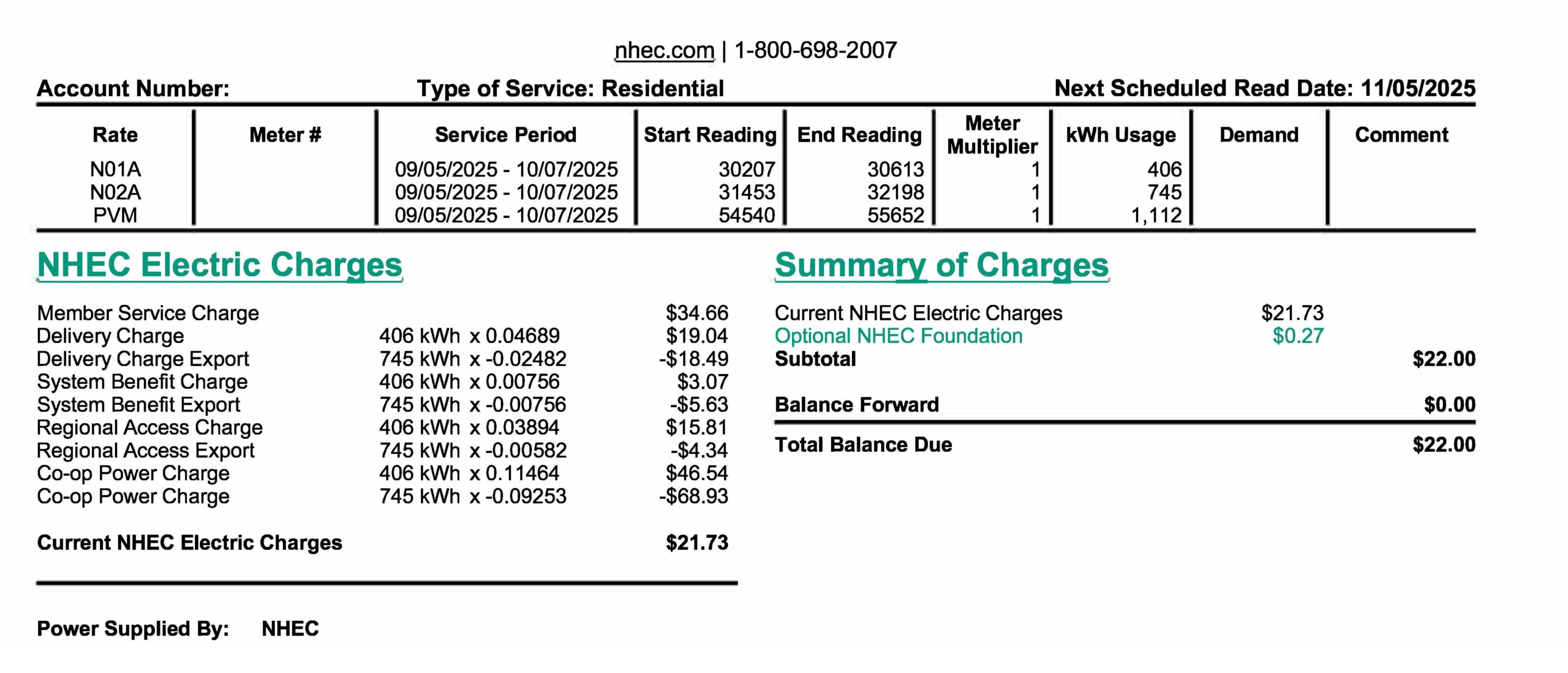Harnessing the Power of the Sun
Net Metering
The Co-op supports our members who choose to install renewable generation at their home or business. During certain hours, your photovoltaic (PV) system may generate more electricity than you can use. Through net metering members are compensated for this surplus generation that is exported to the Co-op’s distribution system.
Please reference NHEC’s Terms and Conditions Section X – Net Metering and Schedule of Rates and Fees for more information regarding our interconnection policies, rates and compensation for exports. We strongly recommend net metering members become familiar with the information contained within these documents.
Interconnection Net Metering Application
If you are planning to install renewable energy generating system the Co-op is pleased to offer this online application system. Working with your installer and us, we will get you on your way to enjoying all that renewable energy generation has to offer. Our application process assists us in evaluating your proposed system and interconnection to ensure its operation will deliver all you are hoping for and is in sync with our electrical distribution system.
Before you begin the application process, be sure to finalize your renewable energy generation and interconnection plans with your installer and be sure to read and understand NHEC’s Terms and Conditions.
Once you have done that, you can begin the application process by clicking the button below:
Avoid Costly Solar Interconnection Mistakes
Are you a homeowner or contractor planning a solar installation? This video will guide you through the common mistakes to avoid during the interconnection process. Learn how to adhere to NHEC’s guidelines to ensure a successful inspection and connection to the grid.
Understanding Your Net Metering Bill
Net metering members will see three separate readings on their monthly bill.
For example, a Residential member would see:
N01A – The amount of electricity NHEC delivered to your home
N02A – The amount of electricity that your PV system exported to NHEC’s distribution system
PVM – This is the total amount of electricity generated by your PV system
